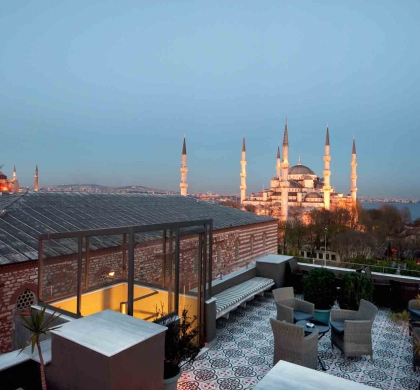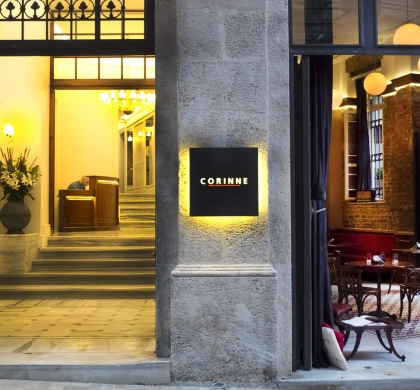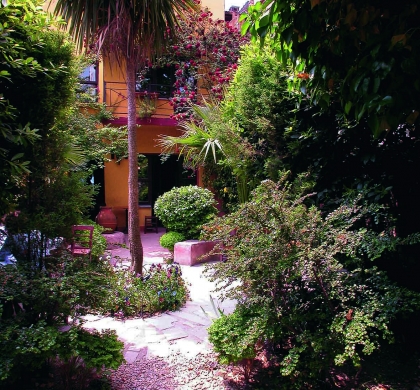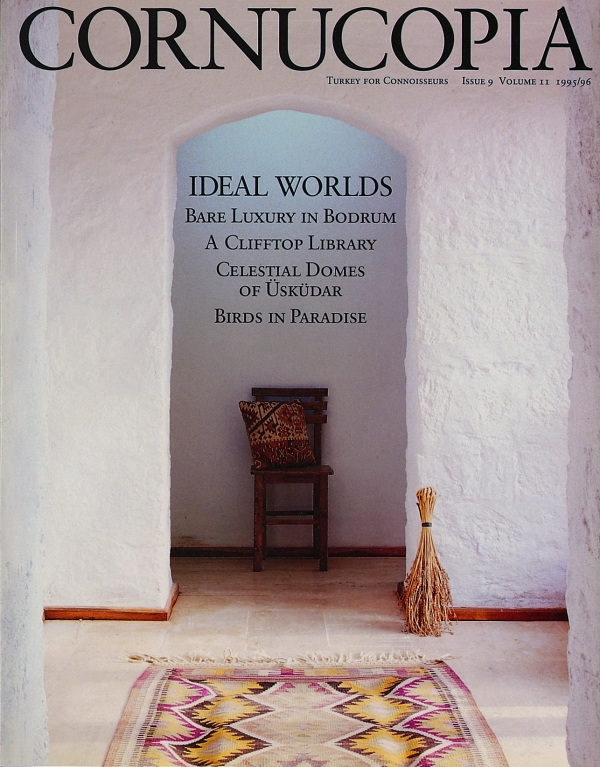Buy or gift a stand-alone digital subscription and get unlimited access to dozens of back issues for just £18.99 / $18.99 a year.
Please register at www.exacteditions.com/digital/cornucopia with your subscriber account number or contact subscriptions@cornucopia.net
Buy a digital subscription Go to the Digital EditionAnd where shall we begin, he would ask, when he’d tired of the adults and defected to the children’s table. Then for the next few hours we would watch him drawing hob goblins in vast tableaux of tilting buildings, crashing planes, wobbling space-ships and ocean lines battling the waves.
Godfrey Goodwin, who died in August at the age of 84, will be best remembered for A History of Ottoman Architecture, the classic 1971 study that persuaded the British art-history establishment to cast away its tired prejudices and give this great architecture the credit it was due. He will be remembered, too, for his fine works on Sinan, the Janissaries, Ottoman women, and life behind the scenes at Topkapı Palace, for his years of service at the Royal Asiatic Society, and for the inspired lectures that imbued three generations of students with his passion for Turkish art and culture. But I shall always remember him as I first saw him, on the campus of Robert College, Istanbul, on a Sunday morning in the spring of 1961. I was eight years old, and standing in the atrium of Hamlin Hall, the student dormitory where he was the housemaster, and where my friends and I had been rollerskating for several hours. This was long before they invented skates that made no noise. It was, I think, the screeching and scraping of our metal rollers on the marble floor that had attracted our large audience.
The students watching us from the interior balconies were applauding us for an unusually graceful figure eight when suddenly there was silence. We looked up and there, on the top balcony, was an ominous figure in a striped satin robe. He glared down at us. “Ah,” he said. His voice was rich, resonant and full of woe. It was clear from his watery eyes that he had been hoping to sleep in. We prepared ourselves for the dressing down we deserved. But when he spoke, it was to make a suggestion. “If you must make noise on a Sunday morning, and I suppose you must, could I perhaps persuade you to decamp to a distant land, populated, if at all possible, by my worst enemies, whose names I would be more than happy to provide forthwith?” Or words to that effect.
Adults wanting to get along with children tend to do so by condescending to them: with Godfrey it was always the opposite. He knew you would understand him perfectly, no matter how elaborate his syntax; the question was whether or not he could return the compliment. “Where shall we begin?” he would ask, when he’d tired of the adults at Christmas dinner and defected to the children’s table. As he adjusted his monocle – and he had every reason to use one, for he was blind in one eye – we’d give him our suggestions. And then, for the next few hours, we’d watch him drawing hobgoblins in vast tableaux of tilting buildings, crashing planes, wobbling space-ships and ocean liners battling the waves.
Correct trimming of the stem is the vital first step. Instead of chopping off the hard stem caps, one should trim it into a cone shape, so that the pod then looks like a sharpened pencil and the juices remain trapped inside.
More cookery features
For boldness, colour and virtuosity nothing can compare with the golden age of the Ottoman kaftan. After months of conservation work to ensure that they could travel safely, the Topkapı lent the Sackler dozens of its mesmerising royal kaftans.
At last there need be nothing between you and the Bosphorus. Patricia Daunt tells the story of how two architects created Sumahan on the Water, breathing new life into an old Ottoman spirit factory. Photographs by Jürgen Frank
A 40-page celebration of the architectural heritage of the Eastern Black Sea Mountains
The dashing Abdülmecit Efendi was the last member of the Ottoman dynasty to hold court on the Bosphorus. This enlightened, sophisticated man with a passion for painting, son of a Sultan and cousin of the last Sultan, spent two brief years as Caliph. But in 1924, the caliphate was abolished and Abdülmecid left the city his family had captured five hundred years earlier for exile in France. His paintings, abandoned in the very studio of his house on Çamlıca Hill where he had created them, are a remarkable pictorial legacy of the last days of empire. By Philip Mansel. Photographs by Fritz von der Schulenburg





Cornucopia works in partnership with the digital publishing platform Exact Editions to offer individual and institutional subscribers unlimited access to a searchable archive of fascinating back issues and every newly published issue. The digital edition of Cornucopia is available cross-platform on web, iOS and Android and offers a comprehensive search function, allowing the title’s cultural content to be delved into at the touch of a button.
Digital Subscription: £18.99 / $18.99 (1 year)
Subscribe now